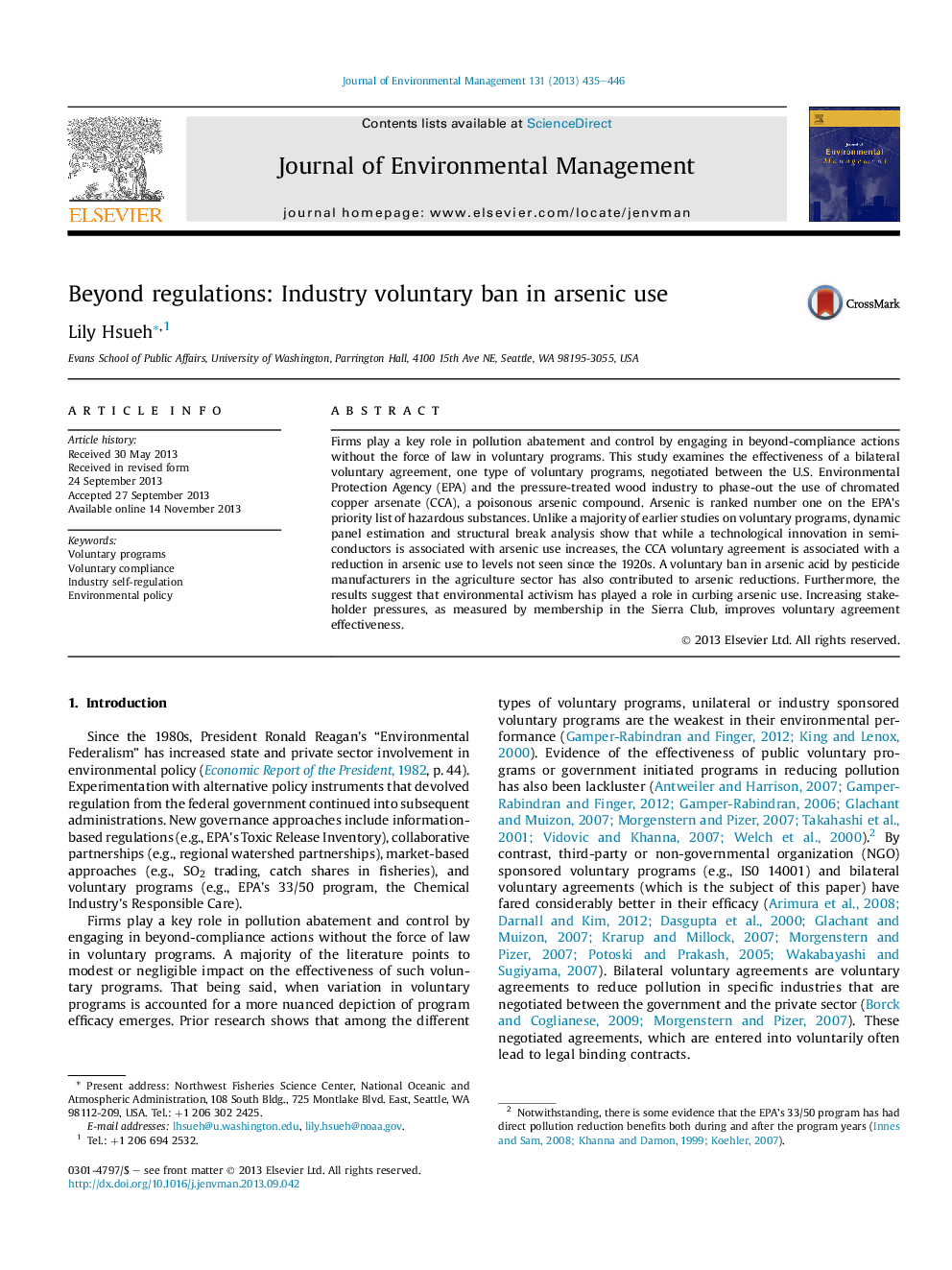| کد مقاله | کد نشریه | سال انتشار | مقاله انگلیسی | نسخه تمام متن |
|---|---|---|---|---|
| 1055971 | 1485281 | 2013 | 12 صفحه PDF | دانلود رایگان |

• Effectiveness of an industry voluntary agreement to curb arsenic use is examined.
• The voluntary ban is associated with arsenic use reductions back to 1920 levels.
• Another industry voluntary ban in agriculture contributed to reduced arsenic use.
• An innovation in semiconductors is associated with arsenic use increases.
• Increasing stakeholder pressures improves voluntary agreement effectiveness.
Firms play a key role in pollution abatement and control by engaging in beyond-compliance actions without the force of law in voluntary programs. This study examines the effectiveness of a bilateral voluntary agreement, one type of voluntary programs, negotiated between the U.S. Environmental Protection Agency (EPA) and the pressure-treated wood industry to phase-out the use of chromated copper arsenate (CCA), a poisonous arsenic compound. Arsenic is ranked number one on the EPA's priority list of hazardous substances. Unlike a majority of earlier studies on voluntary programs, dynamic panel estimation and structural break analysis show that while a technological innovation in semiconductors is associated with arsenic use increases, the CCA voluntary agreement is associated with a reduction in arsenic use to levels not seen since the 1920s. A voluntary ban in arsenic acid by pesticide manufacturers in the agriculture sector has also contributed to arsenic reductions. Furthermore, the results suggest that environmental activism has played a role in curbing arsenic use. Increasing stakeholder pressures, as measured by membership in the Sierra Club, improves voluntary agreement effectiveness.
Journal: Journal of Environmental Management - Volume 131, 15 December 2013, Pages 435–446